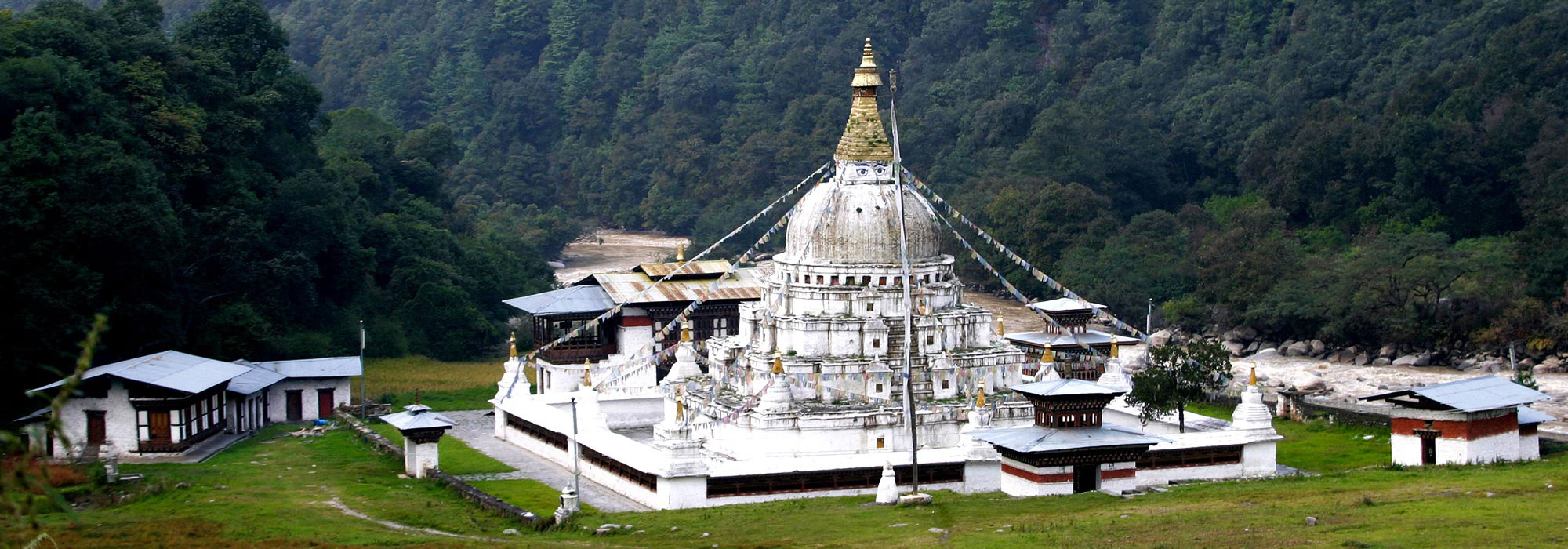

Destination Eastern Bhutan TASHI YANGTSE
Altitude : 1700m/5580ft
One of the newest Dzongkhags (district) in the country, Trashiyangtse was established as a distinct district in 1992 and spans 1,437 sq. km of sub-tropical and alpine forests. With its wealth of natural, historical and cultural resources Trashiyangtse is destination that visitors to Bhutan will never forget.
Trashiyangtse is an ethnically and culturally diverse district and the inhabitants include Yangtseps the regions indigenous dwellers, Tshanglas, Bramis from Tawang, Khengpas from Zhemgang, and Kurtoeps from Lhuentse. This rich cultural tapestry has resulted in an interesting mix of languages and cultural practices in the region. The district is also home to a number of other rare animals including Barking Deer, Himalayan Black Bears, Red Pandas and hundreds of Black Necked Cranes that migrate to the region every winter.
Important religious sites are found all over the Dzongkhag and include Pemaling in the alpine area; Rigsum Gonpa, Dechenphodrang ney and Omba ney (the Taktshang of East Bhutan) between 2000 and 3000m, and Gongza ney and Gom Kora along the Drangme Chu (800-900m).
The story of Gomphu Kora goes back to the 8th century AD. Legend has it that an evil spirit named Myongkhapa escaped from Samye in Tibet when Guru Padmasambhava was spreading the Dharma in the Himalayas. Myongkhapa followed the course of the present-day Kholongchhu stream and concealed himself inside a rock where Gomphu Kora stands today. The Guru followed the evil, mediated for three days inside the rock cave and finally vanquished it.
The biggest attraction of Gomphu Kora is the circumambulation. The place comes alive, once every year in late March, when people all over eastern Bhutan descend upon the narrow valley, dressed in their finery, to partake in the festivity, to worship and to reaffirm their connection with the past. The sanctity of the three-day religious festival even draws the Dakpa tribe from neighboring Arunachael Pradesh (India). They endure days of travel on foot through rugged environs with entire families in tow. Some say the Dakpas have done this for more than a millennium, beginning shortly after Guru Padmasambhava sanctified the place in the 8th century A.D. The Guru is attributed to have said that devotees will flock to Gomphu Kora for eons to celebrate the triumph of good over evil. There couldn’t be a more accurate prophecy.
Local people and Dakpa people from Arunachal Pradesh (India) gather in February/March for Dakpa Kora Festival to circumambulate the chorten. A similar festival in Gom Kora takes place 10 days later.
Further, a legend states that a young girl from Tawang, believed to have been a Khando (Dakini) agreed to be buried alive inside the Chorten.